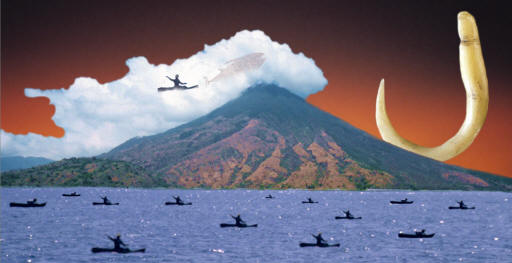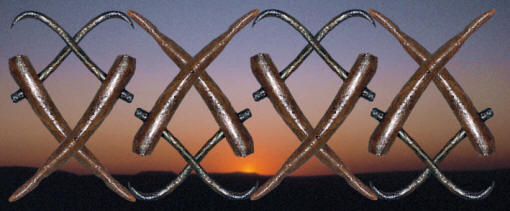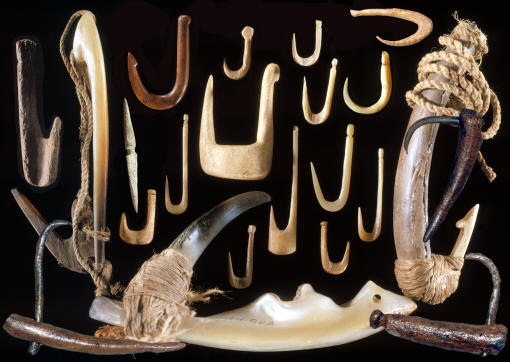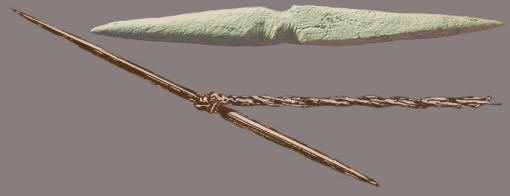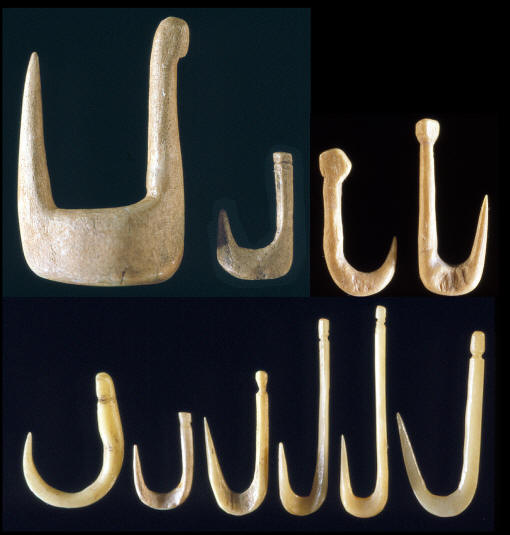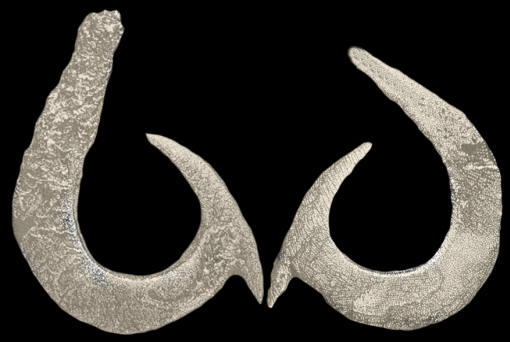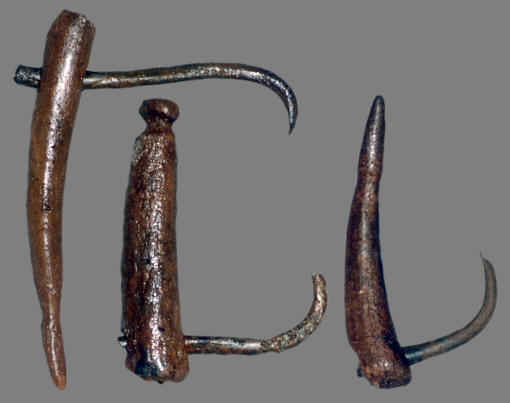|
||
|
||
|
"Generally speaking,
this method (fishing with hook and
line) was used by Indians and Eskimos
only when the other easier methods wouldn't work. Consequently, it is
possible to find a great deal of fish garbage in an aboriginal site and
yet find no fishhooks"---1963, Charles
Miles, "Indian and Eskimo Artifacts Of North America," p. 43.
There aren't to many inventions that have survived such a great depth of time as the fishhook. They have been in continues use, world wide, for at least ten thousand years. Almost everywhere in the world where there were fish, it seems that people left behind a few fishhooks in the village debris. |
||
|
Actually, fishhooks were used more sparingly than might be expected. Hooks aren't always as efficient as other techniques of catching fish. This is true today just as it was thousands of years ago. For instance, special events in weather such as receding flood water might supply a community with an easy catch of fish if they are concentrated in small pools. The fact that fishhooks weren't the main choice of ancient cultures for catching fish has been proven from the excavations of archaeological sites around the world. Many of these sites may produce large amounts of fish bones but few or no examples of fishhooks. |
||
|
||
|
People have caught fish by many different methods. Each technique will depend on the climate, season and temperature. But the water quality is just as important. It can be clear or murky, fast or slow, deep or shallow, near a waterfall, etc., etc. |
||
|
The use of framed or unframed nets that can be thrown, dragged or dipped is another way to catch fish. Fish have also been drugged with different types of natural plant poisons. This technique is usually done in quiet water with a fence across the stream upon which the stupefied victims are caught. One of the more common ways that fish were caught is by harpoon, spear and bow and arrow. Night fishing with torches attached to the prow of a canoe offered an easy target with a spear. Fish were also trapped in weirs made of reeds or sticks and caught behind dams. There seems to be no end to the different ways people around the world have caught fish. |
||
|
||
|
The technique for fishing with hooks can vary quite a lot. Today, most people fish with a line and rod. Other ways are described as fishing with a throw line, a drop line, a spring line of several different types and a set line. Several lines with baited hooks that are attached together are called a trot line. Trot lines are one of the more efficient ways to use fishhooks. |
||
|
A very thick book would be needed to illustrated all the different types of fishhooks and fish lures that have been made during the last 10,000 years. Hook design and production technique is guided by locally available raw materials. For example, naturally growing plant thorns were sometimes used for a barb on a composite fishhook, which saves a lot of time if the alternative is to make one out of bone. The Easter Islander's limited supply of raw materials evidently caused them to make many of their fishhooks out of stone and just as many or more of them out of human bone. |
||
|
||
|
The earliest fishhook may have been the gorge. Gorges are simple double
pointed pins or rods. Unlike a hook that can catch the interior mouth of
a fish, a gorge needs to be swallowed so it becomes lodged in
the throat or stomach. The word gorge means throat or gullet. Another
type of hook that operates on the same principle are the circular hooks.
They resemble a conventional hook but the point curls in far enough to
prevent it from hooking the fish. The hook is used only for bait. The
fish must swallow a circular hook to be effective. Gorges were probably
used on trot lines that could hold many hooks at one time. |
||
| CONTINUE ON TO PAGE TWO | ||
|
"REFERENCES"
1883,
Phillips, Barnet, "The Primitive Fishhook," The Century Illustrated
Monthly Magazine, Vol. XXV, No. 6, pp. 901. |
||
